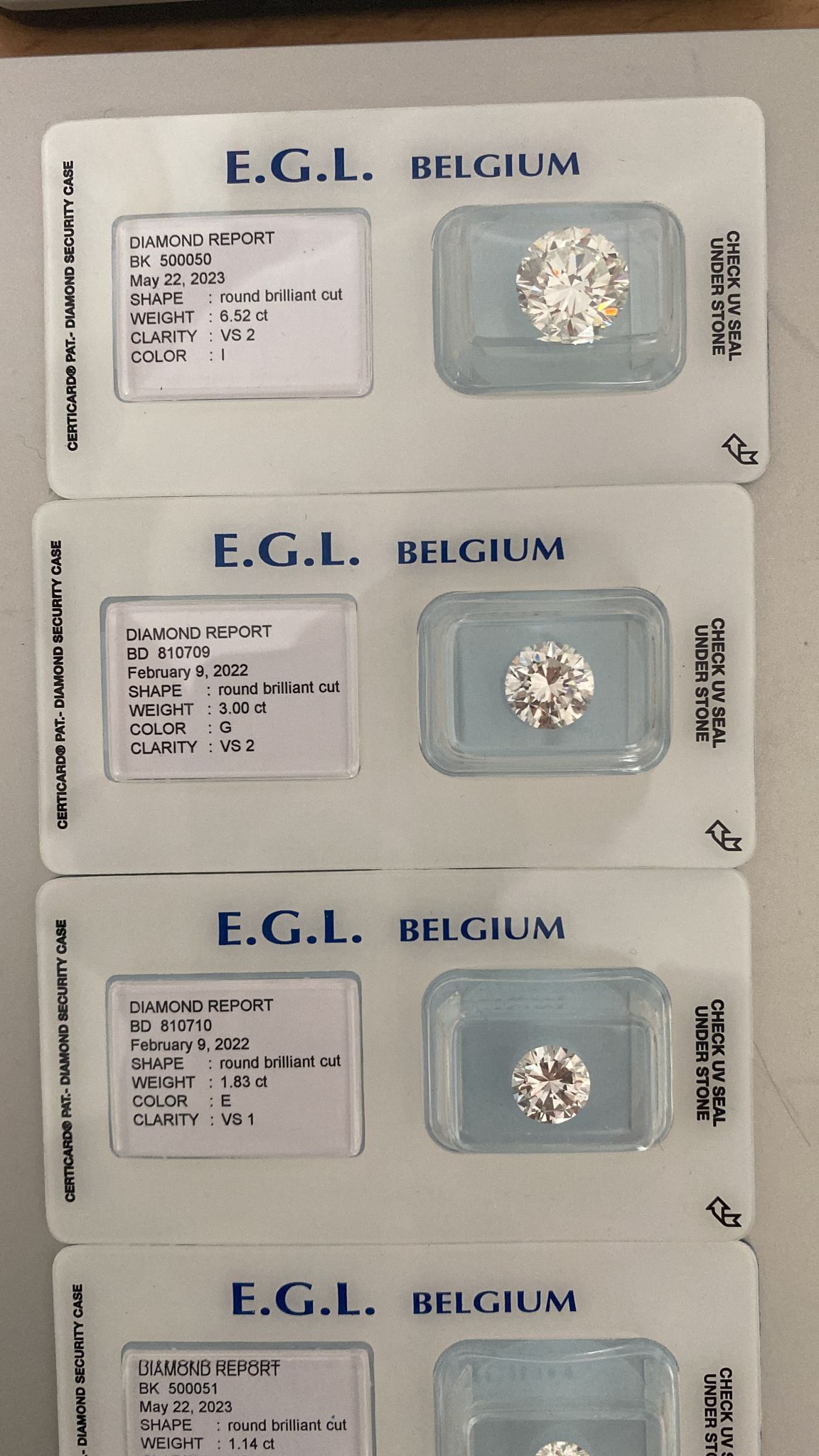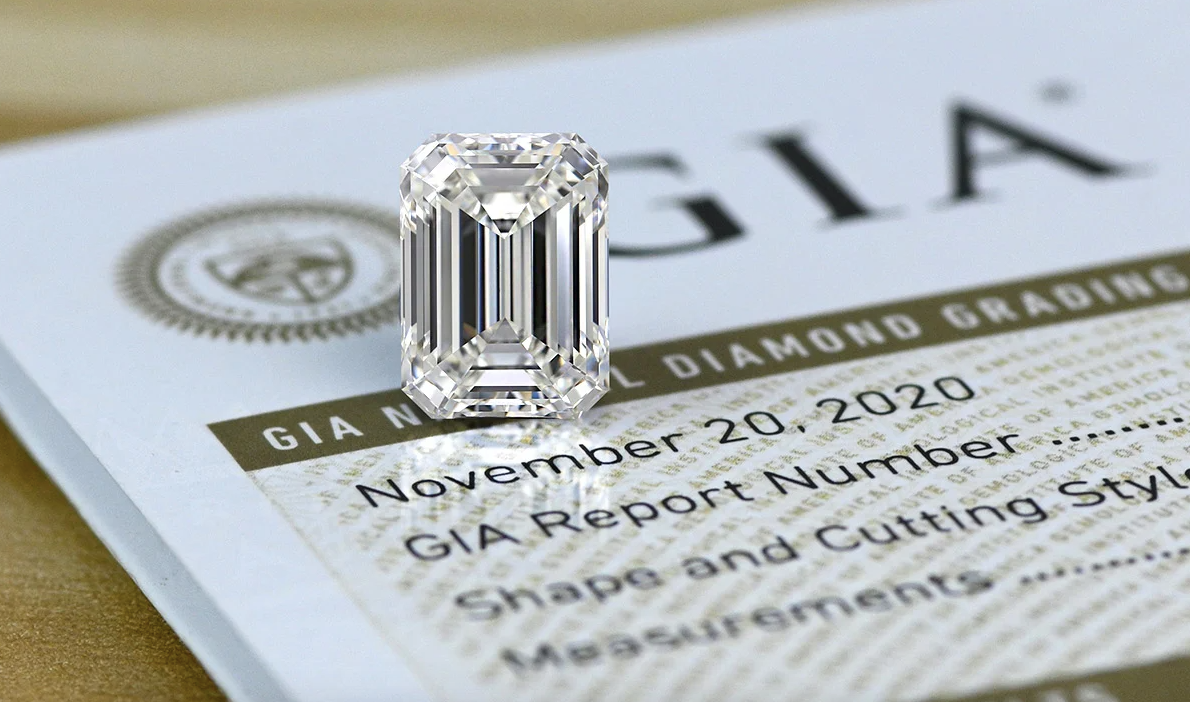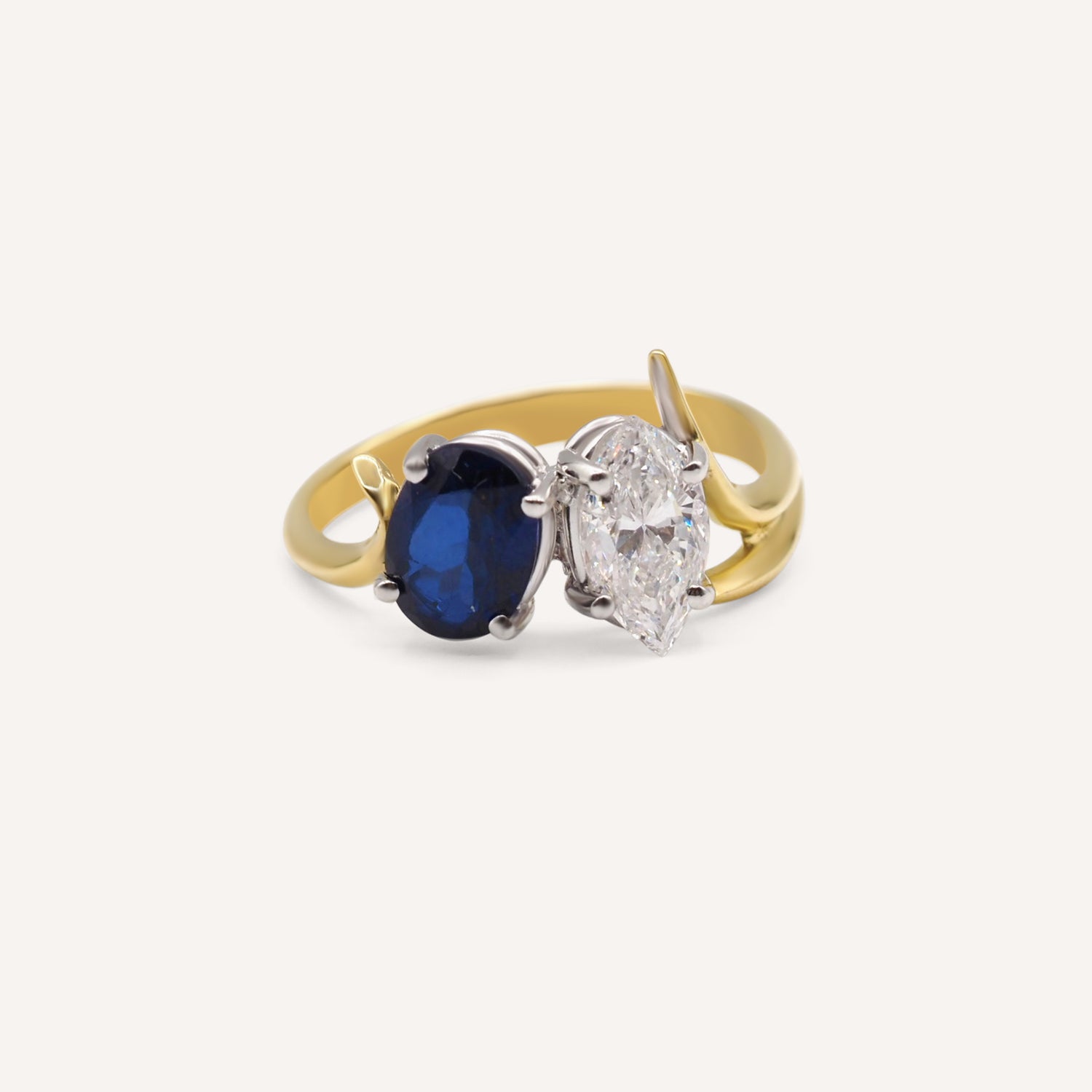CERTIFIED DIAMONDS
Getting engaged is a joyous milestone in anyone's life, and the diamond engagement ring holds a central place in this celebration. Each diamond possesses its individual charm, making the selection process for you or your partner an enjoyable and thrilling experience. When you're in the market for diamond jewelry, it's essential to seek out diamonds accompanied by a grading report. These institutions employ cutting-edge technology to precisely assess the weight and dimensions of diamonds. Furthermore, they meticulously document any imperfections like pits, cloudiness, inclusions, and inadequately cut facets.

THE 4 C'S
Certified diamonds undergo a rigorous evaluation by an independent and reputable gemological laboratory to verify their quality. This assessment involves a thorough examination of four key factors:
1. Cut: The term "cut" refers not only to a diamond's shape (round, oval, cushion, etc.) but also to how well it has been crafted, including its proportions and ability to reflect light.
2. Color: Diamonds are graded based on their degree of colorlessness. The whiter and more colorless a diamond is, the higher its value. The highest color grade is 'D,' indicating an "Exceptional White+" diamond. As you progress through the scale to 'Z,' you'll notice a more pronounced yellow tint, attributed to the natural presence of nitrogen during diamond formation.
3. Clarity: Clarity grading assesses the visibility of inclusions (natural flaws) within a diamond, graded from "flawless" to "imperfect." Inclusions are examined using a 10x magnification jeweler's loupe and can be either internal or external. These inclusions, often seen as small black dots (carbon inclusions), are formed during the diamond's millions of years of development.
4. Carat: Carat refers to a diamond's weight rather than its size, with two diamonds of the same carat weight potentially having varying values and prices based on the other three Cs: Clarity, Color, and Cut. Carat is symbolized by 'CT,' where 1ct equals 0.2 grams, and for intermediate measurements, each carat is divided into 100 points.

WHO CERTIFIES?
Diamonds are certified by independent gemological laboratories, which act as impartial authorities and are not engaged in the buying or selling of diamonds. Among these laboratories, the Gemological Institute of America (GIA) stands out as one of the most reputable.
These labs adhere to rigorous guidelines when evaluating diamonds to ensure accuracy. Each diamond is typically assessed by multiple graders to achieve the highest level of precision.
In our case, we collaborate with official graders such as GIA, HRD Antwerp, and IGI to ensure that our diamonds are accurately and reliably certified. This commitment to certification by renowned institutions underscores our dedication to delivering quality and transparency to our customers.

ADVANTAGES
When you're in the market for a diamond, it's not just a purchase; it's an investment. This becomes especially vital when you're selecting an engagement ring, a symbol of lasting commitment. Opting for certified diamonds enhances the entire experience, providing you with peace of mind and invaluable assurance.
Certification goes beyond a mere piece of paper; it's your key to a deeper understanding of diamonds. It empowers you with knowledge, allowing you to truly appreciate the gem you possess. As your awareness grows, you'll delve into the intricacies of diamond grading, exploring various criteria that define its beauty. Over time, you'll develop a discerning eye for clarity, color, and other attributes, enabling you to distinguish the exceptional diamond amidst a sea of options.
More info
What does a diamond certificate include?
Diamond certificates may vary slightly depending on the certifying institution or brand, but they all focus on key information related to a diamond's quality, often referred to as the 4Cs:
- Certificate Number: This unique identifier corresponds to the specific diamond and is often linked to its individual inscription number.
- GIA Diamond Grading Scale: The certificate typically employs the standard GIA (Gemological Institute of America) scale for assessing the 4Cs.
- GIA Gemologist Grading Report: This section provides a comprehensive overview of the diamond's distinct characteristics, including its shape, origin, and inscription number. It also covers details such as diamond proportions, the results of the 4C grading, and any additional grading information.
- Shape: The certificate specifies the diamond's shape, whether it's a Round Brilliant, Emerald, Pear, or another shape.
- Country of Origin: This confirms the diamond's place of origin, especially if it's sustainably created, and may include details about the foundry where it was grown.
- Date: The certificate issuance date is noted.
- Inscription: This is the unique identification number of the diamond, ensuring its authenticity and traceability to its source.
- Diamond Proportions: This section delves into various measurements, including depth, crown height, crown angle, pavilion height, pavilion angle, table diameter, girdle, and other key dimensions.
- Carat Weight: The certificate specifies the diamond's weight to the hundredth place.
- Color Grade: This grade indicates the diamond's color based on the GIA Color Scale (D-Z) and notes the absence of color.
- Clarity Grade: This grade assesses the diamond's clarity using the GIA Clarity Scale (Flawless-I) and comments on its visual purity.
- Cut Grade: The certificate identifies the cut and quality of the diamond, describing how its facets are arranged.
- Polish: This section rates the quality of facet placement and the exterior finish of the diamond.
- Symmetry: It evaluates how precisely the various facets of the diamond align and intersect.
- Fluorescence: This notes any fluorescence exhibited by the diamond under UV lighting, typically on a scale from Very Strong to None. The presence of fluorescence is a matter of personal preference rather than a strict indicator of quality.
- Gemologist Certification: The certificate identifies the GIA Certified Gemologist responsible for grading the diamond.
- Certification: This section serves as a warranty, affirming the diamond's authenticity and the accuracy of its grading.
Each of these elements contributes to a comprehensive understanding of the diamond's characteristics and quality, helping consumers make informed decisions when purchasing a diamond.
Is a diamond certificate necessary?
Yes! You must know what you're buying. Don't buy a diamond unless it has a certificate.
What are non-certified diamonds?
There's a prevalent misconception that non-certified diamonds are synonymous with fake or inferior-quality diamonds. However, this isn't always accurate. Non-certified diamonds undergo the same creation process as their certified counterparts; the primary distinction lies in the formal evaluation and assessment. When dealing with non-certified diamonds, there's no definitive way to verify their quality as proclaimed by jewelers, and it involves a risk of not receiving precisely what you've paid for.
Visit our showroom
Want to know more about our custom engagement rings? Book an appointment and visit our showroom in Knokke, Belgium.


